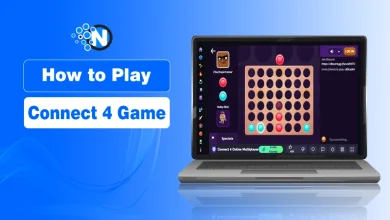
Virtual reality is finally living up to its promise. It’s not just hype anymore because the experiences are genuinely amazing. When you slip on a VR headset, you’re not just playing a game. You’re stepping right into it.
Over the next five years, virtual reality will completely change online gaming. Games will become more interactive, more immersive, and way more fun. The technology keeps getting better, too, with lighter headsets, sharper graphics, and shared online worlds where you can play with friends.
But what does this actually look like? There are already some great examples showing us the way forward. And today, you will get to read them in this article.
The Hardware Leap: Making VR Accessible to Everyone
VR used to mean spending a ton of money on a powerful computer and wrestling with a web of cables. Not anymore. Today, devices like the Meta Quest 3 and Quest 3S can track your whole space and show the real world in full color for less than $500.
Prices just keep getting better. By 2028, basic standalone headsets will be just $199. They’ll feature screens sharper than 4K for each eye and batteries that last through the night. Take a look at what’s happening with VR these days.
The Pico 4 Ultra gives you PC-quality gaming over Wi-Fi 6E with almost no lag. PlayStation VR2 on PS5 makes Gran Turismo 7 feel like you’re really sitting in the driver’s seat. You can actually feel each gear shift through the controllers.
Apple launched its Vision Pro in 2024, giving us a taste of what spatial computing can do. More affordable VR headsets should be available by 2027. Thanks to cloud streaming from services like Xbox and GeForce Now, even budget-friendly headsets can handle demanding games.
The Casino Angle: VR Bringing Vegas to Your Home
Online casinos are getting creative with VR technology. Take Poker VR, for example. When you log in, you’re suddenly in this beautiful casino with marble columns and fountains everywhere. The tables are full of players, and when you sit down for Texas Hold’em, you’ll see other players’ avatars leaning in, shuffling their chips, or checking their cards.
It feels surprisingly real. Platforms offering similar games like Bovada recreate the full casino experience, like blackjack with live dealers who chat and congratulate winners, roulette wheels that spin with satisfying clicks, and slot galleries lit by neon.
You can move between tables, order from the virtual bar, or take in the view from a private balcony overlooking everything. It’s social and cinematic, with thoughtful details that make it feel authentic. Dealers remember who you are, and chips stack with realistic weight. Each time you play, it feels like a proper night out.
Immersive Worlds: Beyond Screens and Controllers
Looking at a flat screen is like peeking through a window. But VR? It’s like someone handed you the keys to the entire house. In Asgard’s Wrath 2, you actually swing swords with your own arms. You climb steep cliffs by reaching up. You trace glowing runes right in the air.
Every move you make is tracked perfectly. Lone Echo II lets you float through empty space stations. You push off walls with your real hands. The feeling of being there hits you right away, and it’s powerful. Racing fans get to sit right in the driver’s seat with Gran Turismo 7 VR.
You feel the road through the wheel and hear tires screech all around you. Beat Saber turns music games into a full workout. You slice blocks with glowing lightsabers using your whole body. Demeo brings tabletop gaming to life. Four friends can lean over a virtual dungeon together.
You roll dice that bounce and make noise on the felt surface. Soon, haptic gloves will let you feel things like a dragon’s rough skin or the pull of a bowstring. These aren’t just tricks. There are completely new ways to play that you can’t get from a regular screen.
Social and Competitive Gaming: Building Communities in 3D
Online games have always centered on people, and VR brings a sense of reality to these relationships. Rec Room is home to millions of players in worlds made by users. These include paintball fields, comedy spots, and beach spots where avatars can laugh, give high-fives, and dance.
VRChat usually gets crowds of 10,000 people for live shows and parties where you can walk up to the stage or fly over the crowd. Competitive scenes are also doing well. Population: One puts teams into huge battle royales that use natural body actions for climbing, ziplining, and reloading.
Echo VR transforms a zero-gravity Frisbee into an esports game watched by many. Pavlov and Contractors offer tactical shooters so gripping that players crouch behind cover in real life.
Big platforms are joining in, like Fortnite and Roblox, that are testing VR modes for launches in 2026. Imagine building a sky fort with friends and defending it while standing inside the walls you built.
Technical Hurdles? Already Being Solved
Though early VR had problems, today’s headsets feature 120 Hz refresh rates, eye-tracking, and foveated rendering for clear images. Motion comfort settings let people play comfortably for hours. Batteries last longer, screens are brighter and sharper, and wireless PC streaming works well.
Developers actively update headsets each month with new features and performance tweaks. The result is a VR experience that works well.
Final Words
Remember flip phones? In five years, 2025 will feel just as outdated. That’s because VR is turning gaming into something completely different. Stop staring at a screen and step inside the game instead. Close your eyes and picture exploring strange new worlds, racing against friends, or sitting at a virtual blackjack table that looks completely real.
The cool thing is, VR headsets are getting cheaper, the games are awesome, and you genuinely feel like you’re with other people. This isn’t some future possibility. It’s happening right now and getting better all the time. If you haven’t experienced VR gaming, what’s stopping you?




